 To enhance service speed and avoid tariff delays, we've opened a US warehouse. All US orders ship directly from our US facility.
To enhance service speed and avoid tariff delays, we've opened a US warehouse. All US orders ship directly from our US facility.
| Cat. No. | Product Name | Field of Application | Chemical Structure |
|---|---|---|---|
| DC10784 | E7820 Featured |
E7820 is an angiogenesis inhibitor that exerts its effects by targeting integrin α2, a cell adhesion molecule prominently expressed on endothelial cells.
More description
|
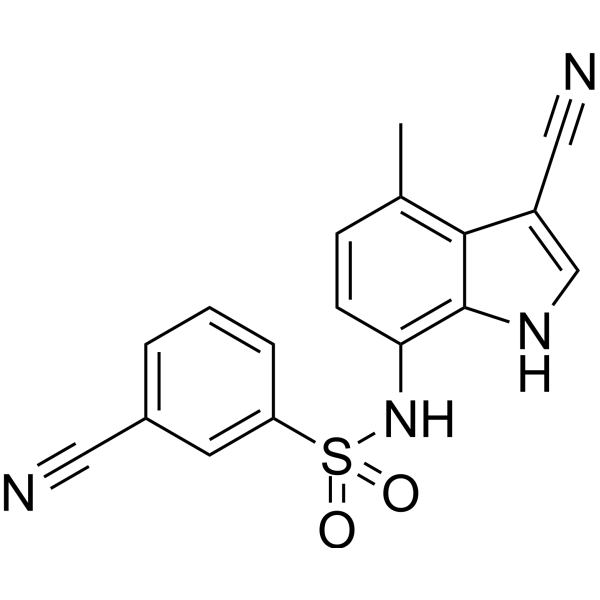
|
| DC55050 | SJ6986 Featured |
SJ6986 is a highly potent, selective, and orally bioavailable degrader of GSPT1/2, with a DC50 of 2.1 nM. It exhibits strong antiproliferative effects in MV4-11 and MHH-CALL-4 cell lines, showing IC50 values of 1.5 nM and 0.4 nM, respectively.
More description
|

|
| DC60572 | NST-628 Featured |
NST-628 is a brain-penetrant molecular glue targeting the MAPK pathway, effectively inhibiting RAF phosphorylation and MEK activation. By binding to RAF, it disrupts the formation of BRAF-CRAF and BRAF-ARAF heterodimers, thereby blocking the RAS-MAPK signaling cascade. NST-628 exhibits potent anti-tumor activity in RAS- and RAF-driven cancers, demonstrating significant efficacy in mutant KRAS, NRAS, BRAF class II/III, and NF1-mutant tumor models.
More description
|
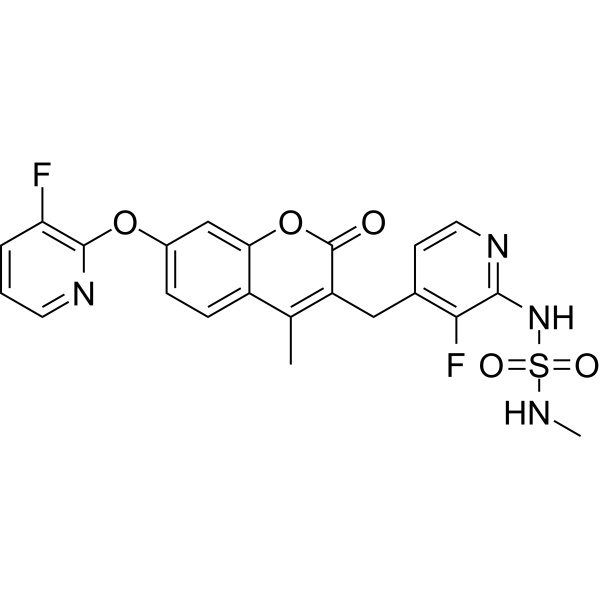
|
| DC60559 | PT-179 Featured |
PT-179 is a novel orthogonal immunomodulatory drug (IMiD) derivative that selectively binds to CRBN without inducing degradation of off-target proteins. It demonstrates potent activity in degrading proteins fused to SD40, regardless of whether the fusion occurs at the N or C terminus.
More description
|

|
| DC39084 | Mezigdomide(CC-92480) Featured |
Mezigdomide is a cereblon E3 ubiquitin ligase modulator with immunomodulatory and antineoplastic properties. By specifically binding to cereblon (CRBN), it alters the activity of the ubiquitin E3 ligase complex, leading to the ubiquitination and subsequent proteasome-mediated degradation of specific transcription factors, including those that act as transcriptional repressors in T cells. This process modulates immune system activity, such as T lymphocyte activation, and suppresses the function of proteins critical for the proliferation of certain cancer cells.
More description
|
.jpg)
|
| DC10174 | Iberdomide Featured |
Iberdomide (CC-220) is a cereblon modulator currently undergoing clinical development for the treatment of systemic lupus erythematosus. It demonstrates potent activity with an IC50 of 60 nM in a TR-FRET cereblon binding assay.
More description
|

|
| DC20984 | Indisulam Featured |
Indisulam (E7070) is a potent sulfonamide-based cell-cycle inhibitor with notable antiproliferative effects. It induces a reduction in the S phase fraction while promoting G1 and/or G2 phase accumulation in various cancer cell lines.
More description
|

|
| DC28693 | CC-90009 Featured |
CC-90009 is a cereblon modulator that selectively binds to CRBN, influencing the activity of the ubiquitin E3 ligase complex. This interaction triggers the ubiquitination and subsequent proteasome-mediated degradation of specific transcription factors, such as Ikaros (IKZF1) and Aiolos (IKZF3), which act as transcriptional repressors in T-cells. By reducing the levels of these factors, CC-90009 modulates immune system activity, potentially leading to the activation of T-lymphocytes.
More description
|
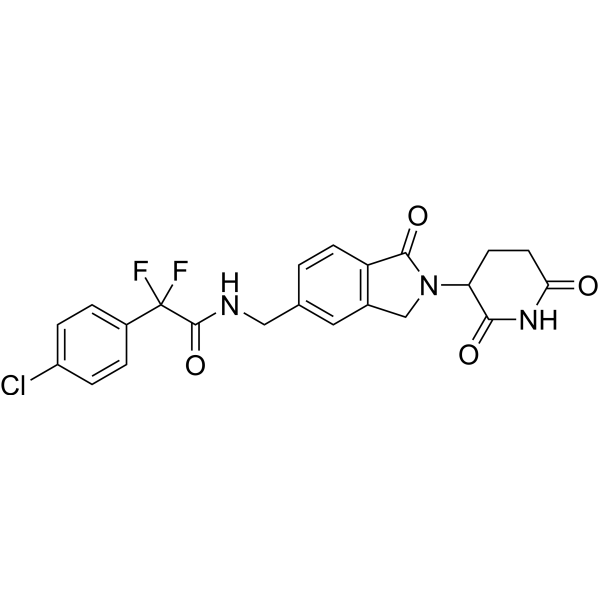
|
| DC67326 | LYG-409 Featured |
LYG-409 is an orally active degrader of GSPT1, demonstrating significant efficacy against acute myeloid leukemia and prostate cancer in vivo, with tumor growth inhibition (TGI) rates of 94.34% and 104.49%, respectively. In vitro, LYG-409 effectively inhibits KG-1 cells by degrading GSPT1, exhibiting an IC50 of 9.50 nM and a DC50 of 7.87 nM.
More description
|
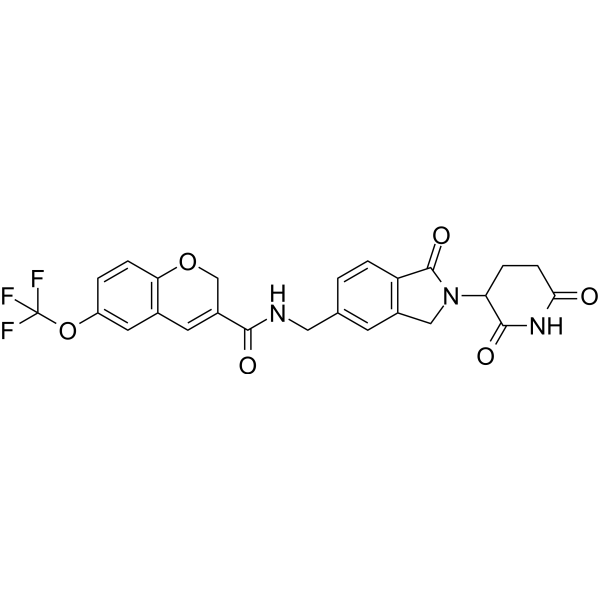
|
| DC67325 | (S)-ACE-OH Featured |
(S)-ACE-OH is a molecular glue exhibiting anticancer properties by facilitating the degradation of nucleoporins and disrupting nucleocytoplasmic transport. It achieves this by inducing an interaction between the E3 ubiquitin ligase TRIM21 and the nucleoporin NUP98.
More description
|
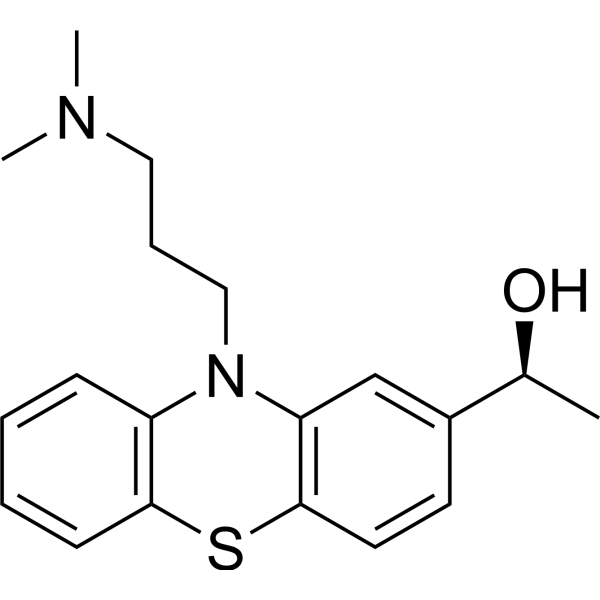
|
| DC9009 | Thalidomide Featured |
Thalidomide has the ability to directly suppress angiogenesis triggered by bFGF or VEGF in vivo.
More description
|
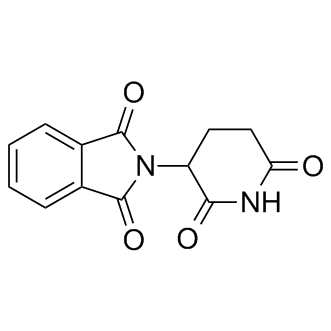
|
| DC11588 | CC-885 Featured |
CC-885 (CC 885, CC885) is a novel modulator of the E3 ligase cereblon (CRBN) that exhibits strong anti-tumor activity by promoting the degradation of the protein GSPT1.
More description
|
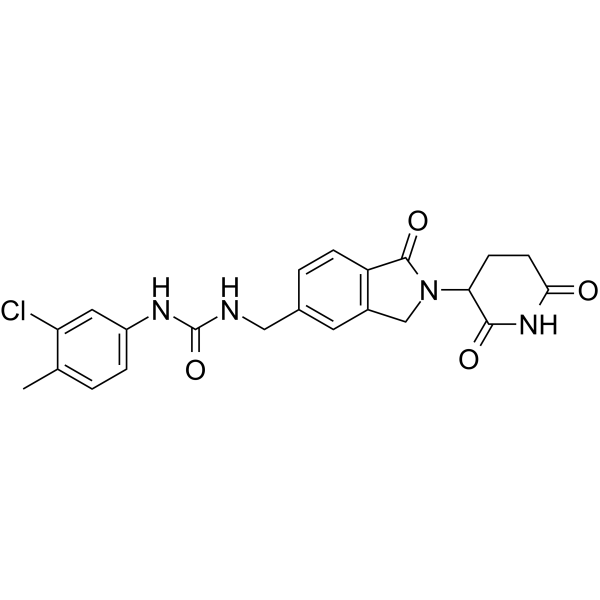
|
| DC6311 | Pomalidomide Featured |
Pomalidomide, a third-generation immunomodulatory compound, functions as a molecular glue by binding to the E3 ligase cereblon, leading to the targeted degradation of critical Ikaros transcription factors.
More description
|

|
| DCAPI1502 | Lenalidomide Featured |
Lenalidomide, a derivative of thalidomide, is recognized for its ability to inhibit TNF-α secretion and exhibit significant immunomodulatory effects.
More description
|
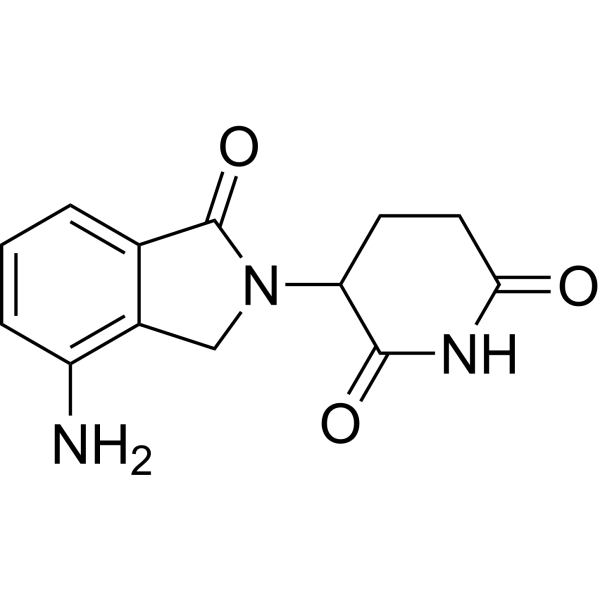
|
| DC11455 | Bz-Ile-Glu-Gly-Arg-pNA HCl(S222,FXa substrate) Featured |
S-2222 (Bz-Ile-Glu-Gly-Arg-pNA HCl) is a chromogenic substrate specifically designed for the detection and measurement of Factor Xa activity.
More description
|

|
| DC11454 | Gly-Pro-pNA(chromogenic substrate) Featured |
Gly-Pro-pNA is a chromogenic substrate specifically cleaved by dipeptidyl peptidase IV (DPP IV), an enzyme present in circulation. The enzymatic activity can be measured colorimetrically by detecting the release of p-nitroanilide at 405 nm. DPP IV plays a critical role in inactivating two key peptides, glucose-dependent insulinotropic polypeptide (GIP) and glucagon-like peptide 1 (GLP-1), which are essential for nutrient-stimulated insulin secretion. This substrate is particularly useful for screening DPP IV inhibitors, which are being explored as potential antidiabetic therapeutics.
More description
|

|
| DC60339 | Cephalofurimazine (CFz) Featured |
Cephalofurimazine (CFz) is a NanoLuc substrate optimized for enhanced brain performance. When paired with Antares luciferase, it generates over 20 times more signal from the brain compared to the traditional combination of D-luciferin and firefly luciferase.
More description
|
.gif)
|
| DC74576 | Fluorofurimazine Featured |
Fluorofurimazine is an advanced furimazine derivative with enhanced aqueous solubility, allowing for greater signal output compared to furimazine in bioluminescence imaging. This compound supports higher substrate concentrations and delivers improved sensitivity for in vivo optical imaging applications.
More description
|

|
| DC45184 | Hydrofurimazine Featured |
Hydrofurimazine is a NanoLuc substrate whose enhanced aqueous solubility allows delivery of higher doses to mice. Hydrofurimazine enables sensitive bioluminescence imaging for either prolonged light production of high sensitivity.
More description
|
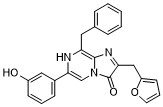
|
| DCC5420 | Viviren Featured |
ViviRen is a synthetic analog of coelenterazine specifically designed for bioluminescence imaging (BLI), offering enhanced performance in visualizing biological processes.
More description
|

|
| DC47169 | pyCTZ TFA Featured |
pyCTZ (Pyridyl CTZ) TFA, a pyridyl-modified derivative of Coelenterazine (CTZ), serves as an ATP-independent substrate for LumiLuc luciferase. This compound produces intense blue bioluminescence upon interaction with luciferases and is particularly effective in aequorin-based calcium sensing applications.
More description
|

|
| DC42623 | Furimazine Featured |
Furimazine, an imidazopyrazinone-based substrate, generates exceptionally bright luminescence when paired with NanoLuc (Nluc). This combination produces a 2.5 million-fold increase in light output compared to the Oluc-19 and Coelenterazine system in mammalian cells.
More description
|

|
| DC8863 | Coelenterazine Featured |
Coelenterazine is a luminescent enzyme substrate, used for monitoring reporter genes in BRET, ELISA and HTS techniques.
More description
|

|
| DCC1510 | Coelenterazine E Featured |
Coelenterazine E serves as a bioluminescent probe, widely utilized for its ability to emit light in biological and chemical applications.
More description
|

|
| DC82050 | Coelenterazine H Featured |
Coelenterazine h, a modified form of Coelenterazine, exhibits heightened sensitivity to Ca2+ compared to the native compound, making it an effective tool for detecting subtle fluctuations in Ca2+ concentrations.
More description
|

|
| DC47168 | pyCTZ hydrochloride Featured |
pyCTZ (Pyridyl CTZ) hydrochloride, a pyridyl derivative of Coelenterazine (CTZ), functions as an ATP-independent substrate for LumiLuc luciferase. This compound produces intense blue bioluminescence when interacting with luciferases and is particularly useful in aequorin-based calcium sensing applications.
More description
|

|
| DC49996 | Coelenteramine 400a Featured |
Coelenteramine 400a (Bisdeoxycoelenterazine), a structural analog of Coelenterazine, serves as a substrate for Renilla luciferase (RLuc). When interacting with Coelenteramine 400a, RLuc catalyzes the emission of blue light with a peak wavelength of 395 nm.
More description
|

|
| DC34489 | DOCK5-IN-C21 Featured |
DOCK5-IN-C21 functions as an allosteric inhibitor targeting the guanine nucleotide exchange factor DOCK5, effectively modulating its activity through a non-competitive mechanism.
More description
|
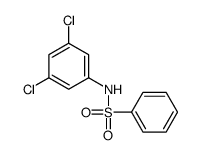
|
| DC12575 | VU0466551 Featured |
VU0466551 is a targeted activator that specifically modulates homomeric G protein-gated inwardly rectifying potassium (GIRK1) channels, demonstrating its selectivity for this ion channel subtype.
More description
|

|
| DC5072 | Duvelisib (IPI-145, INK1197) Featured |
Duvelisib (IPI-145) is a selective inhibitor of the p110δ isoform, exhibiting IC50 values of 2.5 nM, 27.4 nM, 85 nM, and 1602 nM for p110δ, p110γ, p110β, and p110α, respectively, highlighting its specificity and potency.
More description
|

|